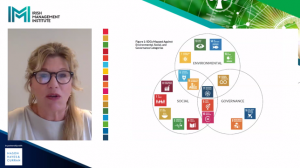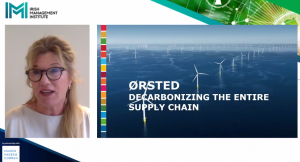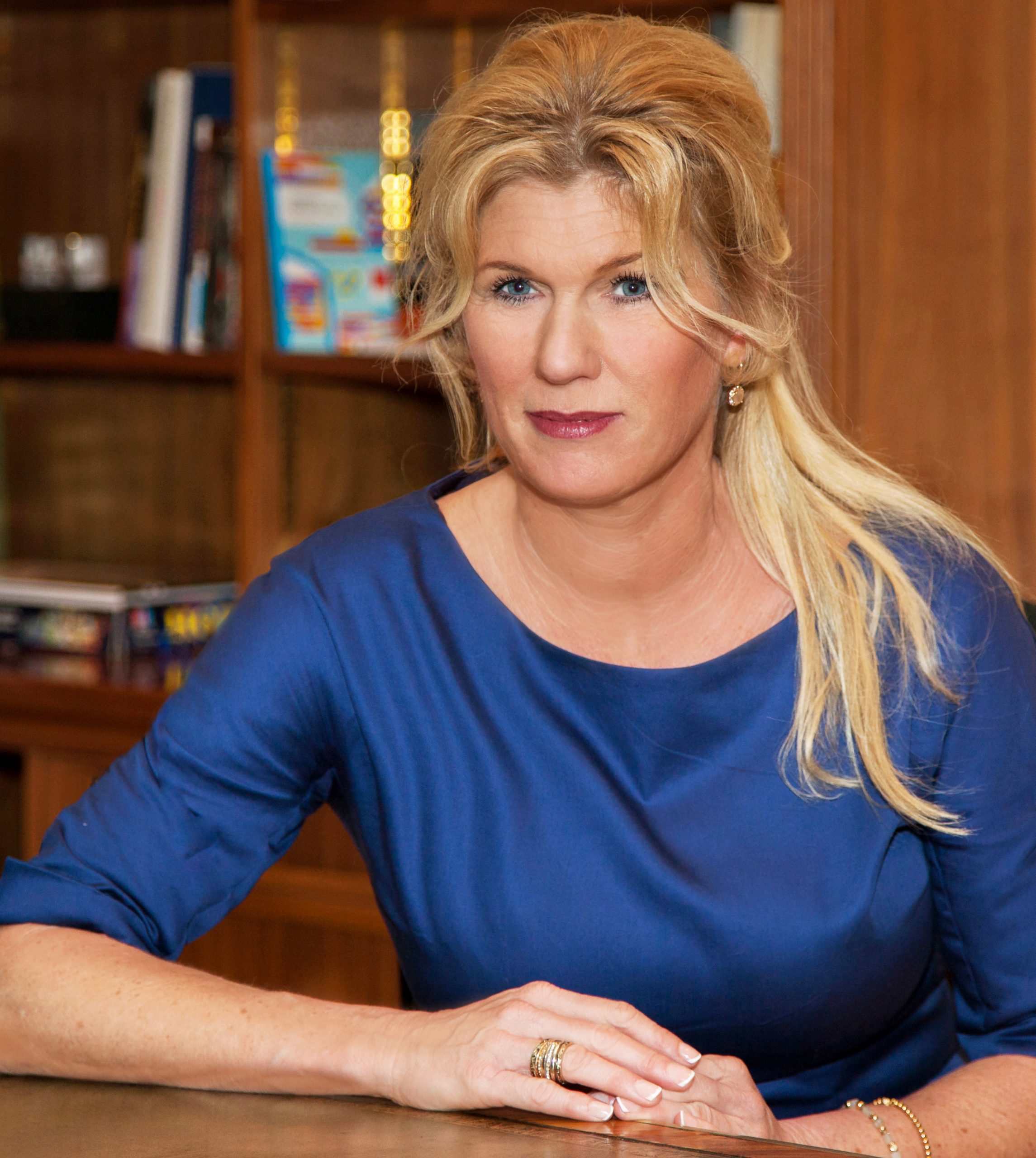Related Articles
Marga Hoek: Business for Good is Good Business
Top takeaways for leaders from Marga Hoek’s Masterclass session on A New Vision for Sustainability.

1. Business for good is indeed good business
In the grand scheme of things, humanity is a blip in the 4.5-billion-year history of our universe. We have been here only around 200,000 years of that time, but it is what has happened in the last 200 years – mass industrialisation – that has brought us to this tipping point with our climate. Over the past couple of years, the Covid-19 pandemic has shifted our concerns from holistic to local as we hav e banded together to fight a deadly virus, with our businesses focused on the immediate over the long term.
At times such as these, when the horizon gets smaller for our businesses and we move from business as usual to survival mode, it is not easy to create a to-do list for the future. However, it is still possible to transform a business during this period of upheaval. Indeed, in every crisis something good can emerge and we can learn valuable lessons.
The last few years have heralded a sea change in attitudes to sustainable investment, with research showing that sustainable companies grow twice as fast as those who are not sustainable in their outlook.
Even as we slowly recover from the lasting effects of the pandemic, this much is becoming clearer: business for good is indeed good business.

2. Beyond neutral: Aim for net positive impact
While pledges have been frequently made by organisations over the past years relating to carbon neutrality, it is time we as business leaders go beyond neutral. Many companies have an international presence, and with that comes a global responsibility. Supply chains for European companies could depend on the Asian market, for example. This distance between parts of a business doesn’t mean we can simply shrug off our responsibility on the sustainability front.
We are one planet, and we have one set of responsibilities.
With a growing middle class, the trend has been for ‘more, more, more’ and waste is still growing. To compensate that, we have to step up as business leaders and be front-runners in this space. If we want to fundamentally change things, doing less bad is not good enough. It is sufficient for short-term returns, yes, but what we need is radical innovation for the long term.
Orsted, a Danish energy company, took the long view with an initiative to decarbonise their entire supply chain. For a business that relied on fossil fuels, this was a daring step and one that wasn’t taken lightly. They transformed their business model from a reliance on oil and gas to wind and solar and demanded that the stakeholders in their supply chain disclosed their carbon footprint. If the stakeholders did not take decisive action to decarbonise, Orsted cut ties with them. In 2020, their transformation complete, Orsted was named the most sustainable company in the world.
This type of bold leadership is exactly what the world needs to face this crisis.
It is only by becoming companies with a net positive impact – that is, giving back more than we take – that we can become part of the solution and not part of the problem. The business reason to do this is very clear: with so many challenges to face, opportunity knocks and new markets open up.
In all, this comes with a price tag of 12 trillion dollars in business opportunities by 2030.

3. For sustainable brands, business is booming
One thing business leaders should be cognisant of is the shifting behaviours of consumers when it comes to sustainability, and the downstream effect this could have for the future viability of businesses. Over the past five years, 75% more people are actively searching for sustainable products and services. Sustainable brands that are also marketed as such grow 5.6 times faster than non-sustainable brands or sustainable brands that do not communicate their greener focus.
If your business has been a champion of sustainability, make sure your clients and consumers know about it; it is a great opportunity to build trust throughout all your stakeholders. To become a truly sustainable company, leaders must adopt a multi-stakeholder approach. Rather than fixating on generating value for shareholders, the approach should be more holistic. Headlines over the past couple of years have featured examples of companies like Shell, ExxonMobil and Chevron changing their strategic direction due to their overreliance on fossil fuels, with board members who weren’t on board asked to step aside.
Prosolve, a company in Mexico, is an example of a brand that has taken full advantage of the changing market. It created a depolluting façade that cleans the air of smog in cities, providing an arresting visual as well as delivering practical solutions for pollution. The façade has the versatility to be applied to many buildings, including parking garages. In differentiating itself in this way, Prosolve created a market niche all of its own.
As the market is increasingly made up of millennials and Gen-Z, generations that are much more likely to vote sustainably with their wallets, massive opportunities exist for businesses that can meet this demand.

4. Companies have to vote with their wallets
A study was conducted recently on the 100 largest economies by GDP. It revealed that 69 of the listed economies were in fact companies, not countries. This staggering statistic goes to show that business has a unique power to influence the move to greener practices around the world. A bold move by a CEO in one of these 69 companies can tip the balance.
As companies, of course, that change in momentum is driven by capital. In other words, we have to vote with our wallets, much like the younger generations are with sustainable brands. By directing our capital for good, we can quickly change things and can generate positive impacts worldwide. When companies have formed coalitions, this has been particularly effective.
A company called Interface used to be a carbon-intensive producer of carpet tiles, but since 1994 their business has undergone a radical transformation. Embarking on a mission to be emission zero, they set a goal of eliminating their negative impact on the environment. Today, that mission has been achieved and the company has become the first global flooring manufacturer to sell all their products on a carbon neutral basis across their life cycle.
Their story is a valuable one for leaders: they didn’t want to be part of the problem anymore, and so investigated a pathway to transformation.
It is not just large organisations that can lead the change, though. Start-ups and SMEs have a role to play and we must be conscious as leaders that we bring the competencies and advantages of different parties to the table.
Business has a central role to play in reconfiguring the sustainability movement if we are to generate a new game with new rules to tackle this global matter.

5. Unleash the power of your brand
As green consumerism continues to take off, there is an opportunity for businesses to leverage their access to consumers. Let us take the example of IKEA, a brand known the world over for its attractive designs and plush showrooms. What IKEA also has, of course, is a massive volume of customers. The company has set out to be inspiration to those who follow their messaging: in all, they have access to about 1 billion people. With this access comes great power and influence.
Many businesses have this access and might not even realise it. Finding ways to showcase your brand with a lens on sustainability is a powerful tactic for leaders to incorporate into their overall communications plan.
Unilever took a different approach and reoriented around sustainability, insisting on sustainable brands only for their supply chain. The brands that refused to budge were repurposed or sold on. What Unilever found is that their sustainable brands grew 1.86 times faster than their other brands. In all, it made business sense for the company to change its ways. Sustainability is now a key pillar of their overall strategy.
6. Sustainability starts at the very top
Some organisations have recruited a Chief Sustainability Officer (CSO) to tackle the various challenges and business priorities related to sustainability. In reality, it is the CEO who must in effect be the chief sustainability officer, having clarity on the company’s goals and being willing and able to attack them with ambition. If an organisation chooses to have a CSO, of course, that person must have a seat at the executive table and have a say on company strategy and objectives; anything else is not good enough.
With the combined knowledge and experience of the CEO and CSO, executive boards will have an excellent grounding to reshape organisational priorities as needed.

7. Bold leadership is the blueprint for change
Leading sustainable companies, with all the insecurities at hand, requires specific leadership traits – boldness, courage and authenticity. By setting ambitious goals and pointing to that inspirational dot on the horizon, leaders can mobilise their people to act and, very often, to achieve goals earlier than anticipated.
As a leader in a sustainable company, you are on the offensive side, not the defensive side. In other words, your mission is purpose-driven and minimises risk as sustainable markets continue to grow at pace.
While bold leadership is an essential element for a sustainable leader, my work in this area has identified five key leadership competencies:
- Intentional: Ensure there is a condition within the organisation to put sustainability at the heart of the strategy. Even if the going gets tough, your role as a leader is to drive the sustainability agenda, reframing the difficulty as opportunity and changing the direction of the company in the process if needed.
- Ambitious: Only huge ambition really works, so set a bold objective to get the company moving in the right direction quickly and to be a more attractive employer.
- Consistent: This sounds straightforward on paper, but it doesn’t often happen, unfortunately. Consistency means that every discipline in the company is oriented towards sustainable objectives. For example, the company’s pension fund should be set up to invest in sustainable portfolios.
- Collaborative: It is important as leaders that we collaborate with different sectors and with those who have different knowledge of sustainability. By forming a consortium with these organisations, more can be achieved.
- Accountable: Leaders must be transparent about their actions on sustainability. This is achieved by measuring the impact of your organisation’s work (even if not enforced by law) and making your progress visible. Communicate your successes to clients, stakeholders and investors to reap the rewards.
Ultimately, the blueprint for change rests with leaders. Sustainable markets are growing rapidly; with the right brand of leadership, the success rate of companies will also grow.
For more IMI Corporate Member Insights, go here.





